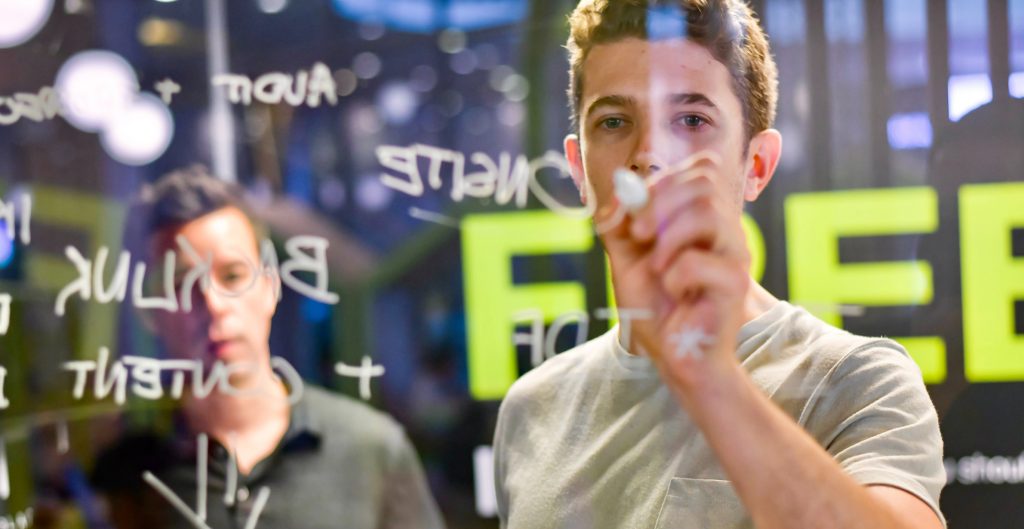Are you wasting money on digital advertising?
SuperNova">SuperNova
If your agency isn’t ticking all of these boxes before taking your money, ask the questions and make everyone accountable.
We often have clients approach us wanting our recommendation on where to spend their digital media budget in the hope of seeing a spike in results straight away. When we take a look under the hood it almost always becomes apparent that work needs to be done, before we recommend they spend any money.
Here are our key tips to ensure success for any digital campaign, no matter how big or how small. If your agency isn’t ticking all of these boxes before taking your money, ask the questions and make everyone accountable.

What are your objectives?
Paid media campaigns generally are achieving one or more of three primary objectives; brand awareness, customer acquisition, and customer retention.
Different businesses have different objectives which require different success metrics. When looking at which performance metrics to use to define campaign success it is important that those align with the business’s objective.
Brand awareness
Recommended channels: Facebook, Instagram, YouTube, Display Ads
Brand awareness campaigns are designed to keep the brand front of mind with consumers. These are particularly successful with new businesses (such as ours), FMCG businesses and other businesses which have offline conversion points. The primary metrics to look at are indicators of interest and engagement with the brand on digital platforms.

Brand awareness campaigns are best measured by:
- Reach – how many unique users your campaign reach
- Frequency – how many times an average user saw your content
- Video views – how many users viewed your video
- Engagement – how many users engaged with your content
- Engagement rate – at what rate did users engage with your content
- Social followers – how many new users began following the social accounts
- Branded searches – how many searches there were for your brand in search engines
A proposed user journey would be: view content > engagement > follow brand/search for brand.
The reach and frequency provide an idea of how many users viewed your message, the engagement rate identify how they reacted to the content and social followers and branded searches see how much value was built for them to take an active involvement with the brand.
Brand awareness is designed to capture the user’s interest and prepare them for a customer acquisition campaign as they’ve been nurtured through the funnel.
Customer acquisition
Recommended channels: Facebook, Instagram, Google Search, Display Ads

Customer acquisition campaigns are designed to monetise current users/followers and are designed to build value with strong call to actions. The primary performance metrics to look out for are conversion based ones.
Customer acquisition campaigns are best measured by:
- Web traffic – how many users visited your site
- Engagement – how many users engaged with your content
- Average time on site – how long users are spending on site per session
- Website engagement – what percentage of sessions ended in under 10 seconds
- Conversions – the total number of sales or leads
- Conversion rate – the percentage of users who converted
- ROAS – return on ad spend
Conversion based messaging is selected for audiences who have had active engagements with the brand online as these audiences are more likely to convert than those higher up the funnel.
Customer retention
Recommended channels: Facebook, Instagram, Email Marketing, Display Ads
These campaigns are looking to add lifetime value to customers who have made a transaction with the business. These users are the most valuable because they are familiar with the brand, have already had sufficient value to buy and require touch points in the sales cycle to reactivate them to purchase again. These can be done with direct messaging through email or through paid media channels. Email marketing is a more cost efficient platform but requires contact information of the purchasers and a mobile CRM.
Customer retention campaigns are best measured by:
- Email open rate – How many users open email marketing communications
- Email click through rates – What percentage of users click through on a promotional offer
- Engagement rates – How many users engage with social content
- Lifetime value – How much a customer spends over time
- Returning visitors over time – How many times does a user visit the website over 28 days
Visualisation of this requires blending of data sources, with connectors to a reporting dashboard to facilitate the information all on one singular dashboard.
How often should campaigns be optimised?
In short, when there is sufficient sample size to determine patterns and trends. Generally, the first optimisation for a display campaign on social or web has 50,000-100,000 impressions we can identify what is working well and what isn’t working so well. For search campaigns it’d be recommended to review and make the initial optimisations following 2,000-5,000 impressions. Following the initial optimisation campaigns should be checked on a couple of times a week or until there is sufficient sample size to determine campaign success.
Generally speaking, with campaign optimisations there is a thing called confidence interval which is used in split testing of all forms. This is where we identify whether a singular change led to greater performance using advanced statistics, with the general minimum threshold being a 90% level of confidence that the change led to an increase in performance. There are tools online which assist in calculating confidence intervals such as here.
Analytics

The primary benefits of digital marketing is the clear measurement of performance metrics to understand the success of a campaign. Data is collected online and then fed to third party programs to offer insight into performance. This is not available in offline marketing with TV, radio and other mediums providing a challenge to gauge campaign effectiveness outside of incremental uplift in sales.
A successful analytics set up requires tagging of action points on websites where users are expected to complete an action. Tag management is the primary method for doing this which track things such as clicks on a website, forms submitted and page depth scrolled.
This allows functionality to set up conversion optimisation through website development and UX projects which allow the advertiser to understand how users engage with their website and content and how this can be improved upon to improve marketing efficiency.
Items that would require monitoring are:
- User journey to conversion
- User drop offs on their way to conversion
- Brand sentiment and awareness
- Behaviour and engagement on website
- Behaviour and engagement on social platforms
Dashboards
Tracking performance in real time is imperative to marketing efficiency and understanding campaign success. Real time dashboards provide a fast overview of your current performance metrics that you’re targeting with a campaign and your digital performance overall.
There are different products on the market depending on the scale of the requirements for your business. A recommended output for most businesses would be Google Data Studio which allows users to connect over 500+ different data sources. These include primary sources such as Facebook, Google Ads, and CRM systems such as HubSpot.
Other data visualisation tools on the market are Power BI, Tableau and Looker which all have similar functionality and performance.
Please feel free to reach out here if you have any questions. Our team at SuperNova can help you identify and implement the right strategies for your business.

